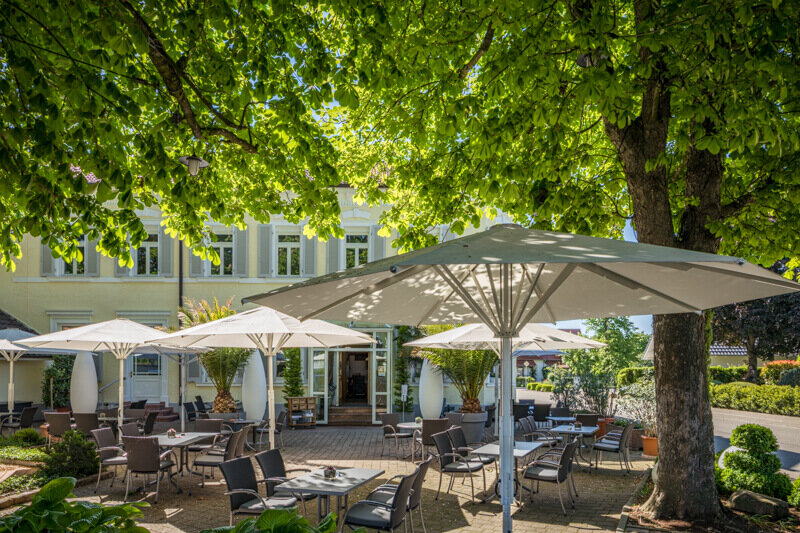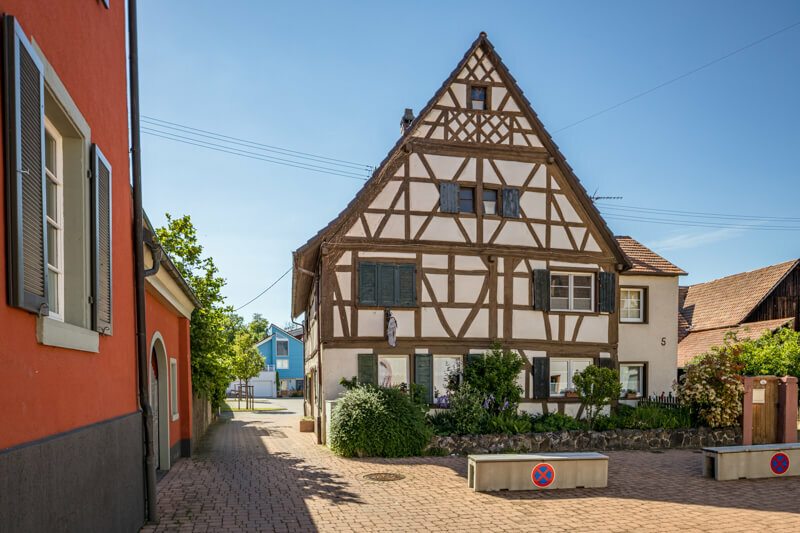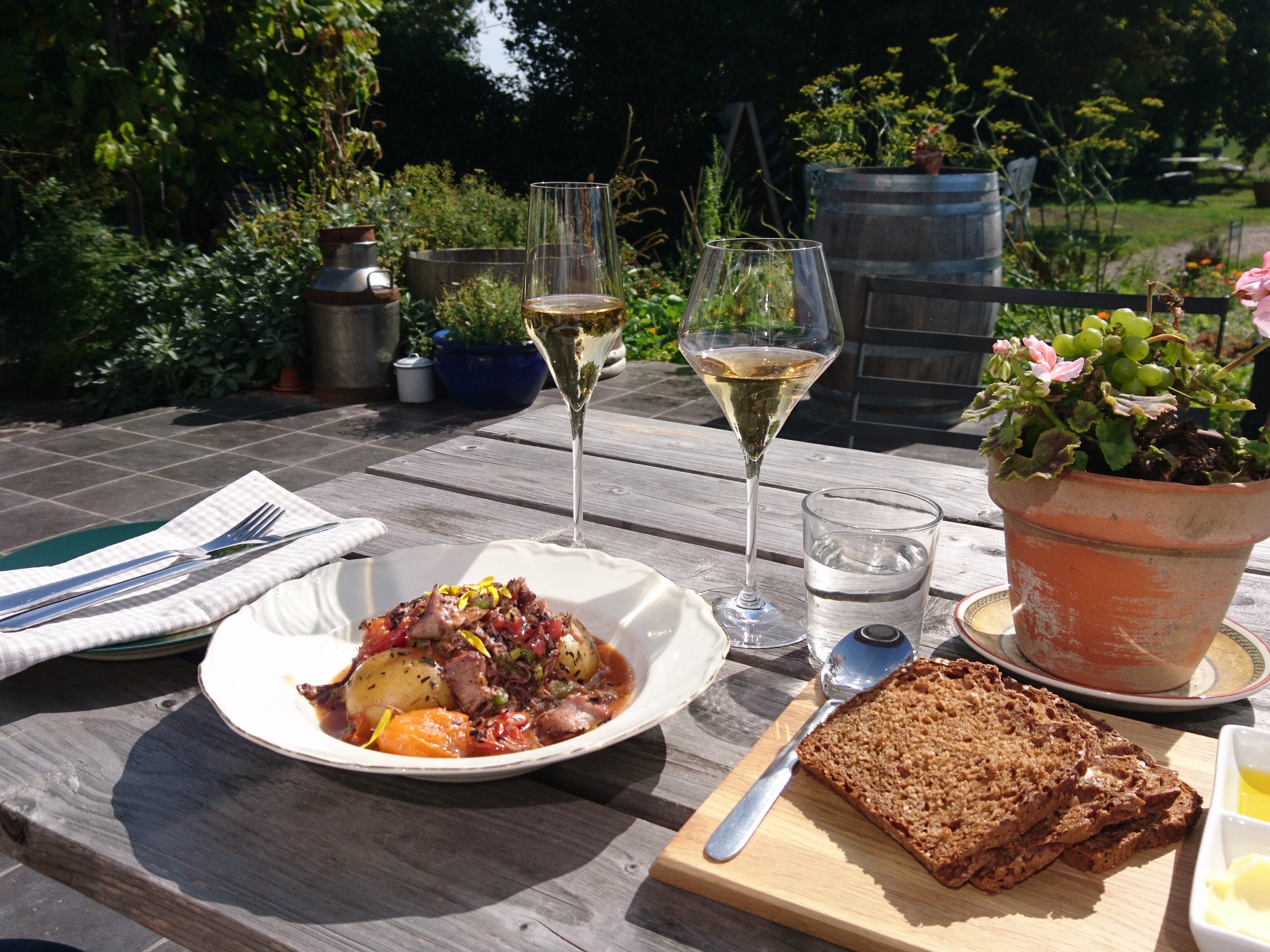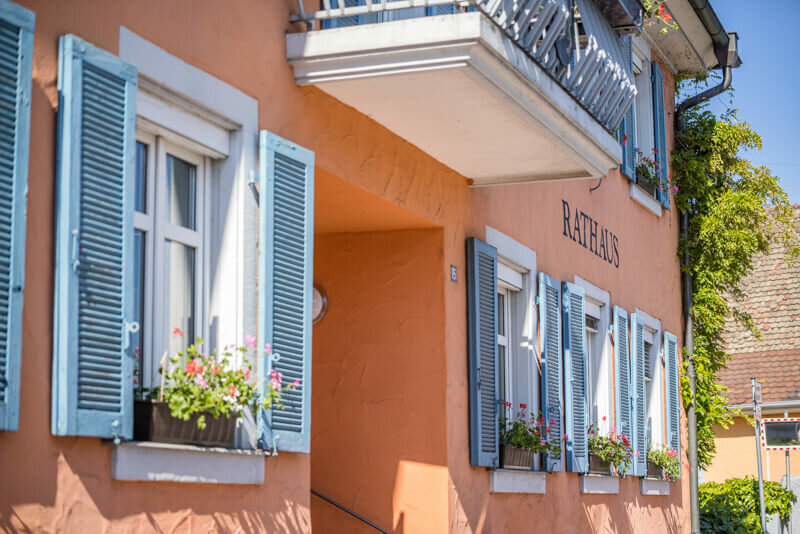
Sasbach with the districts of Jechtingen and Leiselheim
Sasbach am Kaiserstuhl
The wine-growing and holiday community of Sasbach am Kaiserstuhl, with the districts of Jechtingen and Leiselheim, lies directly on the Rhine.
Favoured by the Mediterranean climate, a unique and lush fauna and flora can be found here in the Kaiserstuhl. At any time of year, guests will find ideal conditions for cycling and hiking along the Rhine or through the vineyards.
Hiking destinations: Pilgrimage church on the Litzelberg, Limburg ruins Circular hiking trails, scientific nature trail: subject areas "volcano, wine, forest, water and history." The landmark of Jechtingen is the "Sponeck" castle. Next to it, the remains of a Roman fort have been visibly excavated. In front of the house where the poet Emil Gött was born, a memorial fountain commemorates the great son of the village.
The nearby floodplain forests are a special attraction for visitors to Jechtingen.
Life in the smallest part of the village, Leiselheim, is peaceful. The picturesque winegrowing village is also widely known for its vineyards, including the "Leiselheimer Gestühl". The term "Gestühl" refers to a princely court that the German king Otoo III convened in Sasbach. There is speculation that the princely courts subsequently gave the Kaiserstuhl its name.
The origin of Sasbach
The origin of the largest part of the village, Sasbach, probably goes back to the time of the Romans, who had built a fort on the nearby Limberg. Later, the Zähringers built the "Limburg" fortress on its site, where Emperor Rudolf von Habsburg was born in 1214. The remains of the castle today reveal its former importance.
Until the Rhine was regulated by Tulla, Sasbach, first mentioned in 839, maintained its old tradition as a fishing village. Today, at most, a few net fishermen and the amateur anglers of the angling clubs are reminders of this old tradition. Over the years, Sasbach has become a well-known wine village.
One of the many places of interest is the scientific nature trail on the Limberg. Here you can walk in the footsteps of the past and explore the special features of archaeology, history, geology, mineralogy, flora and fauna and much more in a unique way on a 6.5 km hiking trail with over 100 information boards.
In addition, those seeking recreation will find ideal conditions for cycling and hiking along the Rhine or through the numerous vineyards. Families can enjoy the bathing lake or the Rhine with its various water sports.
Sasbach am Kaiserstuhl is quite a remarkable place, whether you look at it in terms of its history, its leisure opportunities or its wines, especially the "Roten Halde", a phenomenal red wine. The 3,300 inhabitants who live in the entire municipality have a very special, friendly mentality that makes a stay in this municipality an experience - you just have to get involved.
Jechtingen district
Finds from the Neolithic Age hint at Jechtingen's past. The Romans, who were here later, may have introduced viticulture, which finds ideal conditions on the volcanic soils.
The landmark of Jechtingen is Sponeck Castle and it is located where Jechtingen is at its most beautiful: in the middle of the Rhinewoods surrounded by wide fields and the vine-covered slopes of the Kaiserstuhl. Next to Sponeck Castle, the remains of a Roman fort have been visibly excavated.
The Jechtingen district is criss-crossed by numerous hiking trails. The many half-timbered houses dating from the 17th, 18th and 19th centuries are also interesting. Jechtingen's most important personality is the writer Emil Gött, who was born in Jechtingen in 1864. A memorial fountain still commemorates him, as does the Emil-Gött-Stube in the village administration building.
Around 1000 inhabitants currently live in the Jechtingen district of Sasbach.
Among them is the painter Albert Schneider, known in the art scene as Alberto. Since 1995, Alberto has been showing his paintings, created using a wide variety of techniques, in his gallery in Jechtingen's Hauptstraße. It is not difficult to find this gallery, as its façade is probably the most photographed object in the region. It depicts figurative, real and abstract motifs, just as life and everyday life do.
District of Leiselheim
The youngest and smallest of the three districts that make up the municipality of Sasbach is Leiselheim, whose name first appears in a document in 1155. Today, the picturesque winegrowers' village, which has already won several awards in the state competition "Unser Dorf soll schöner werden" (Our village should become more beautiful), has only about 400 inhabitants. Here, on the north-western edge of the Kaiserstuhl, visitors can enjoy a fantastic view of the Rhine plain, the mountains of the Black Forest as far as Lahr and Offenburg, and finally the Vosges Mountains. You should definitely take a look at the town's landmark, the Stockbrunnen, which dates back to 1607 and is located opposite the winegrowers' cooperative. On the fountain, which was almost completely destroyed in the Second World War and only restored in 1965, a rhyming slogan recalls the hard and labour-intensive life of the Leiselheim winegrowers. Not far from the Stockbrunnen you reach the Brunnästübli, which has just been inaugurated. On the one hand, this "Stübli" is meant to serve communication with each other, and on the other hand, visitors will find ever-changing exhibitions. The first of these was a mega-sized doll's house and a series of pictures by the Jechtingen painter Alberto with numerous motifs and views of Leiselheim. Incidentally, in 1737 Leiselheim was the birthplace of the princely Baden state architect Carl Friedrich Meerwein, who at the age of 47 made his first successful flights with the flying machine he had constructed. Remains of the Band- and Schnurkeramiker as well as the Michelsberg culture attest to the early settlement of the village, which celebrated its 850th anniversary in 2005. However, Leiselheim gained a certain fame through the vineyard site of the "Leiselheimer Gestühl". At least according to historians, the "Gestühl" refers to a court of princes that the German King Otto III convened in Sasbach in 994.
Sasbach with the districts of Jechtingen and Leiselheim
Discover Sasbach now




